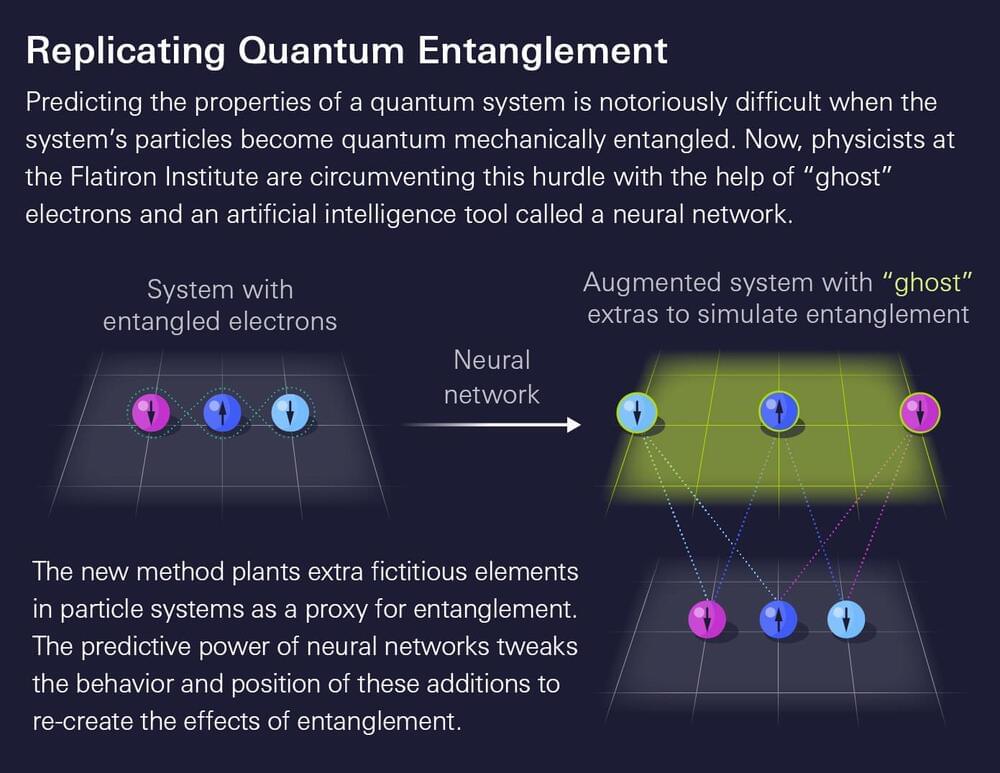Physicists are (temporarily) augmenting reality to crack the code of quantum systems.
Predicting the properties of a molecule or material requires calculating the collective behavior of its electrons. Such predictions could one day help researchers develop new pharmaceuticals or design materials with sought-after properties such as superconductivity. The problem is that electrons can become “quantum mechanically” entangled with one another, meaning they can no longer be treated individually. The entangled web of connections becomes absurdly tricky for even the most powerful computers to unravel directly for any system with more than a handful of particles.
Now, quantum physicists at the Flatiron Institute’s Center for Computational Quantum Physics (CCQ) in New York City and the École Polytechnique Fédérale de Lausanne (EPFL) in Switzerland have sidestepped the problem. They created a way to simulate entanglement by adding to their computations extra “ghost” electrons that interact with the system’s actual electrons.
